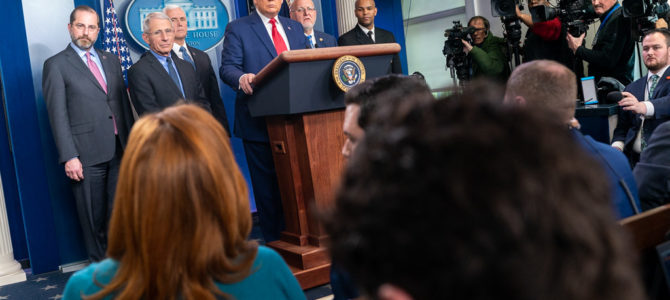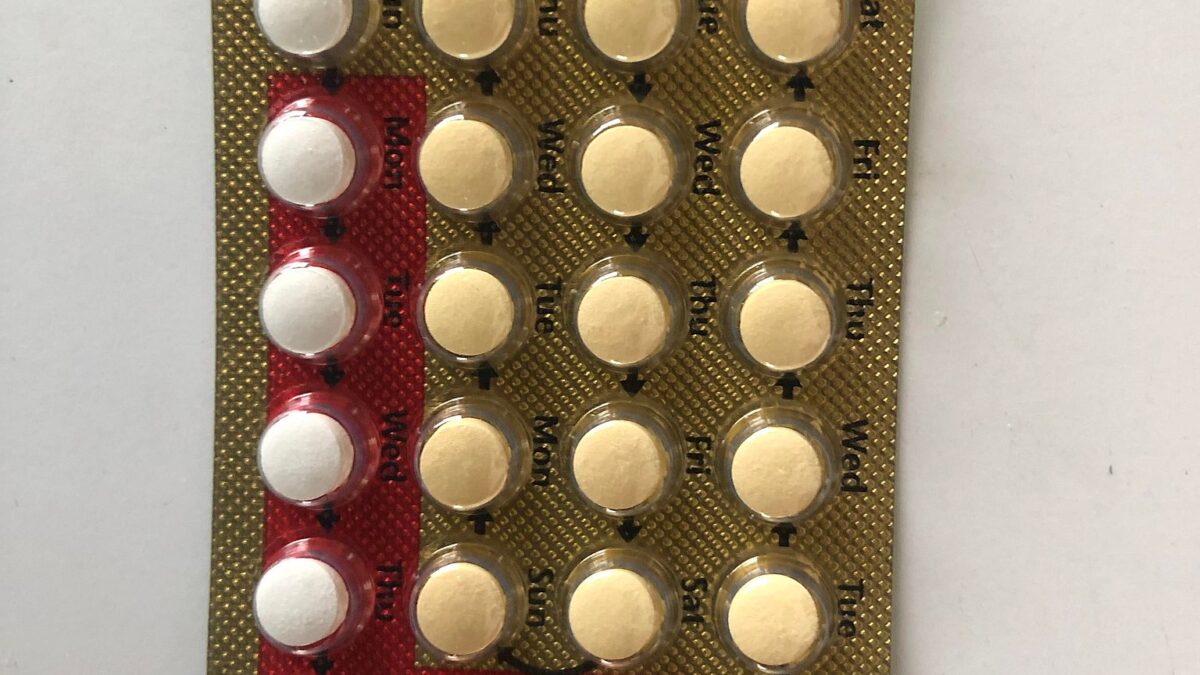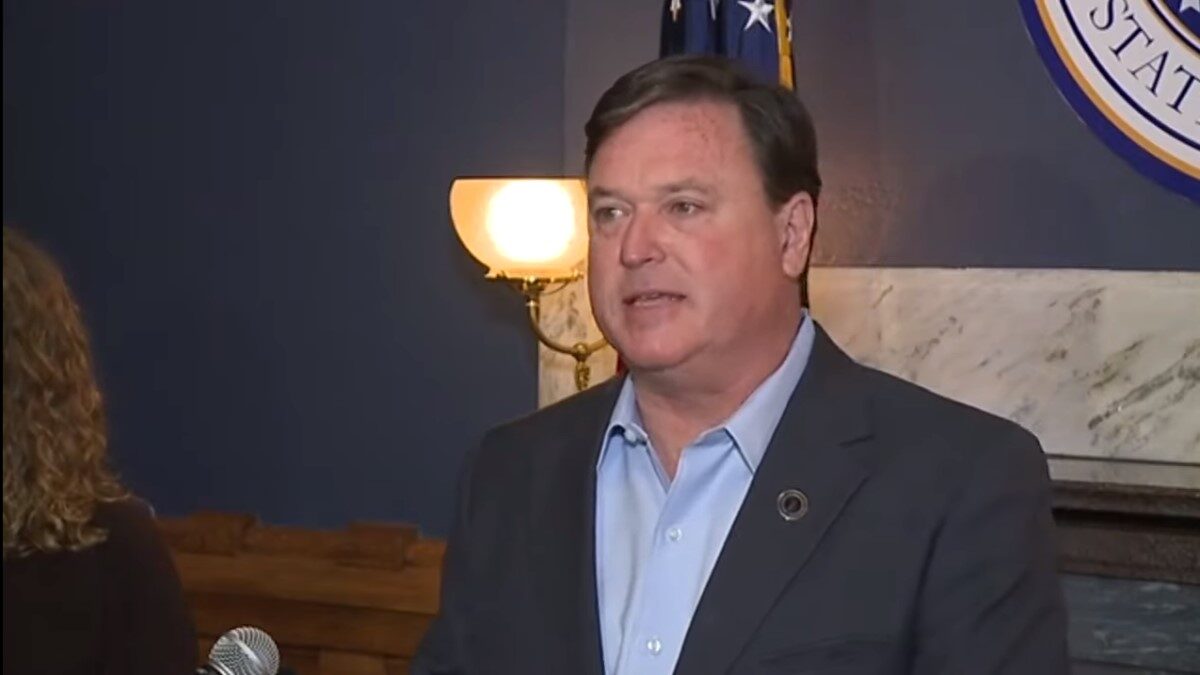
A week ago, Tucker Carlson warned that the outbreak of the novel coronavirus that originated in Wuhan, China in 2019, COVID-19, could put Bernie Sanders in the White House. Carlson is right. President Trump’s response to COVID-19, rhetorical and actual, will make or break his presidency.
As the markets were panicking over the virus, Trump claimed the media and Democrats were overblowing the virus to hurt him politically: “Low Ratings Fake News MSDNC (Comcast) & CNN are doing everything possible to make the Caronavirus (sic) look as bad as possible, including panicking markets, if possible,” wrote the president on Twitter.
With Trump’s tweet, among others, came the general feeling that the White House wasn’t taking COVID-19 very seriously. Of course, Democrats and some in the media are attempting to use the virus for political gain. First, they said the Trump administration had cut coronavirus funding at the Centers for Disease Control—except that is totally untrue. Democrats have also tried to say that Vice President Mike Pence isn’t qualified to lead Trump’s coronavirus taskforce—except that Pence is incredibly qualified.
The White House response thus far hasn’t been perfect, however. There’s been a concerning trend of conservative pundits and TV doctors dismissing fears about COVID-19 as media-induced hysteria. TV doctors can rant all they want about how dumb it is for the public to react to the virus, but people have reason to be worried. Markets have a good reason to be worried as well.
Why Public Concern Makes Complete Sense
From a human perspective, there’s good news and there’s bad news. The bad news is that the death rate of COVID-19 is anywhere between 1.5 and 2 percent, and deaths are concentrated among at-risk populations including heavy smokers, diabetics, and the elderly. That’s a high death rate, and if experts are correct about how many will get the disease, the world could face millions of deaths. A Harvard scientist predicts the global infection rate will be between 40 and 70 percent, for example.
That gets us to the other piece of bad news. The virus spreads incredibly easily. It can live for nine days on a surface if the temperature is at or below 85 degrees Fahrenheit—that’s most of the things we touch in public spaces. China is washing its money to try to stop the virus’ spread.
Another reason the virus spreads so easily is that it can live in a host for at least a couple of days without producing any symptoms. When it does take hold, it sits in the throat area, making it easier for the breath or coughing of an infected person to spread COVID-19 to others. About 80 percent of those who get the virus won’t experience symptoms that require hospitalization. That is great news, but that increases the spreadability even higher.
Worse, a significant chunk—around 15 percent—of people who get the virus can contract it again after only a matter of weeks. This is due to the incredible speed at which COVID-19 is mutating. While the body builds immunity to the average cold for around two years, we have no idea how long COVID-19 immunity lasts. For the 85 percent of people who can’t get it again right away, we have no idea whether their immunity will last much longer.
Add to all this the stunning accusations that COVID-19 was cooked up in a Chinese biowarfare lab, and it is quite rational for people to not want to get this virus. Sen. Tom Cotton (R-AR) is right to question the Communist Party’s line that the virus originated in a “exotic food” market. That’s because the Lancet medical journal has dismissed the market’s role in the outbreak, Wuhan is home to China’s only “Level 4” lab that handles these materials, and China’s government has imposed new restrictions on microbiology labs in the wake of the outbreak.
All that being said, it appears likely most of us will get the virus and be just fine. Even better, children have so far been incredibly resilient against the virus, and tend not to experience severe symptoms. Also, a COVID-19 vaccine appears to be on the way, and could be available by late summer. Eventually, all will return to normal. Yet the economic implications of the virus are most concerning of all, and require a level of seriousness from the White House that was missing for much of last week.
The Market Is Also Pricing in Real Risk
From a market perspective, the virus is much more deadly. U.S. equities just experienced their quickest and biggest drop since the Great Depression. Chinese PMIs, a measure of services and manufacturing activity in China, just printed worse numbers than when the world was in the depths of the financial crisis. To understand this, think of the economic reaction to COVID-19 as taking place in three stages.
Stage 1: The virus takes hold and begins growing exponentially. For example, if 60 people have the virus and each passes the virus to four others, then 240 people have the virus. If 240 people pass it to four others, then 960 are sick, and so on. Again, this virus won’t kill the vast majority of us, but it is much deadlier than the flu.
Stage 2: People react to the exponential spread of the virus by significantly changing behavior—they travel less, spend less, and maybe even take a few weeks off work if they can’t work from home. Government also enacts policies that damage economic activity to stem the increase of the virus.
This is the stage that damages the market and economic growth. Some of the deferred spending and production will be lost forever. Global supply chains, already damaged by the trade war, are upended. For example, automakers in Europe and Japan who rely on Chinese auto parts are being forced to shut production. Meanwhile, indebted companies that already struggle just to make their interest payments—especially in China—will face further financial pressure and even insolvency.
Stage 3: The mix of government policy and the human reaction causes the rate of increase of the virus to slow.
China’s official data should always be doubted, yet it may still provide some use. Because the government only measures cases that require hospitalizations, and many don’t exhibit symptoms severe enough to be hospitalized, it is highly likely that China is severely undercounting those who have the virus, but still more-or-less getting the rate of change right.
If China is getting the rate of change even close to right, Stage 3 is where China is today. It took the country about 2.5 months to get there. Now, the risk is that as Chinese workers go back to work—pushed by a government that fears financial collapse—the virus begins spreading anew, which would bring China back to Stage 1.
The Proper White House Response
All this is to say that the economic implications of COVID-19 are extremely serious. The stock market may bounce back quickly, but equities could keep going lower and the global economy could contract in 2020.
Based on this alone, the White House reaction to the outbreak has been disappointing thus far. Yes, the White House travel restrictions from China were made decisively, ignoring political correctness, and thinking only toward American interests. President Trump has also just announced that he will add to enhanced travel screening from highly affected areas of the globe.
Yet the White House could be reacting even more strongly. Why should non-citizen Italians be able to fly to the United States from Italy while the virus is breaking out in that country, for example? Boris Johnson gets it. He’s set up a coronavirus “War Room.”
The White House’s biggest problem has been rhetorical. No doubt, the lack of a stronger response—including an “Italian travel ban”—is meant to not induce panic. Trump’s dismissal of the virus has also been at least partly meant to not induce panic.
Yet there’s a middle ground between “nothing to see here,” and “the sky is falling.” This middle ground is somewhere along the lines of “keep calm and carry on.” Yes, the blitz is coming, and it could kill you, but think of your community and others and power through, because we are Americans and that’s what Americans do. That’s the tone Trump should be striking rhetorically, and his policy can toughen up and reflect that.
Always Be Seen as Acting
Finally, the White House must consider this in purely Machiavellian terms: Despite all his advantages going into 2020, this virus truly could lose Trump the election. Not because the economy tanks temporarily, but because America faced danger and the president didn’t appear to be vigorously acting.
A leader should always be seen as acting, even if the actions don’t matter. Think of President Obama during the hurricane versus George W. Bush. Think of Franklin Delano Roosevelt in the Great Depression—he might have made things worse, but he was seen as always acting.
This issue naturally favors President Trump, and calls into question the basic benefits of globalization and integration with China. Right now, Trump’s biggest weakness going into the election is not getting tough soon enough. There’s little political risk to reacting strongly. Economic risk, yes. But little political risk. Political risk is highly skewed in the direction of doing too little.
The American people will put up with tough measures—even an overreaction—about this virus. The problem may be that Trump is surrounded by advisors who care too greatly about the concerns of international business and Wall Street. Trump needs to push back, or he risks losing in 2020.









